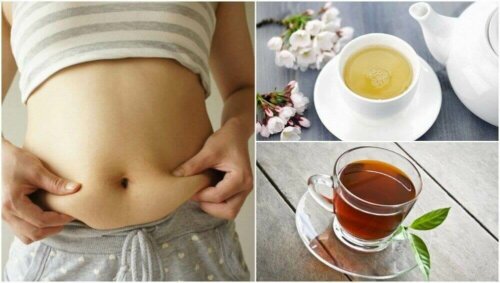이 글에서는 체중 감량에 도움이 되는 맛있는 차 몇 가지를 소개해 보려고 한다. 차는 저칼로리 음료로 체중 감량을 원할 경우 식이 보조제로 활용할 수 있다. 물론 지방 연소에 기적적인 효과가 있는 건 아니지만, 맛있는 차는 대사 활동을 향상하고 영양소를 제공해 준다.
따라서 정기적으로 마시면 몸을 해독하고 질병을 일으키는 독소의 제거를 촉진할 수 있다. 그뿐만 아니라 차는 몸의 에너지를 증가시키고 과식으로 이어지는 불안을 예방한다.
물론 그 효과는 다른 생활 습관과 신체의 작동 방식에 따라 달라질 수 있지만 말이다. 다시 말해, 그 효과는 개인마다 다를 수 있다.
하지만 일반적으로 체중 감량을 목표로 할 때는 차를 음식 및 운동과 결합하는 게 이상적인 솔루션이라고 할 수 있다.
그렇다면 몇 가지 옵션을 살펴보도록 하자!
체중 감량에 도움이 되는 맛있는 차 5가지
1. 녹차
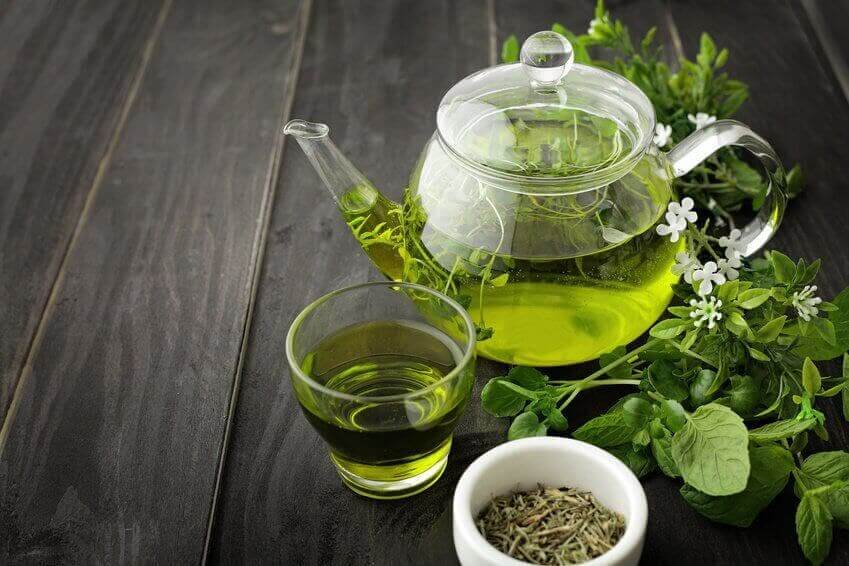
멋진 몸매를 만들어 주는 최고의 차 중 하나인 녹차는 단기간에 지방을 줄이는 데 도움이 되는 항산화 음료다.
녹차에 들어 있는 고농도의 폴리페놀과 무기질은 지방 침전물의 형성을 줄이고 지질을 에너지원으로 전환하는 과정을 지원한다.
재료
- 녹차 1작은술(5g)
- 물 1컵(250ml)
준비 과정
- 녹차를 한 컵의 물에 넣고 약한 불에 5분간 끓인다.
- 불을 끄고 10분 동안 기다린 후 잎을 거른다.
섭취 방법
- 공복에 그리고 오후에 녹차 1잔을 마신다.
- 녹차를 일주일에 적어도 3회 이상 마신다.
더 읽어보기: 여드름에 녹차가 효과적일까?
2. 백차
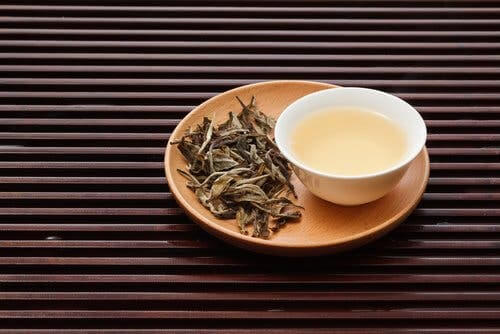
어떤 사람들은 백차가 체중 감량에서 훨씬 더 효과적이라고 말한다. 녹차보다 산화 방지제가 풍부하며 지방 세포의 형성을 줄이는 데 도움이 되기 때문이다.
백차의 정화 효과는 독소 제거를 자극한다. 또한, 문제가 있을 때 림프계의 기능을 복원하는 데에도 도움이 된다.
재료
- 백차 1작은술(5g)
- 물 1컵(250ml)
준비 과정
- 물 1컵에 백차를 넣고 끓인다.
- 약한 불로 3분간 둔 다음 불을 끈다.
- 10분 동안 그대로 두었다가 채로 걸러 낸다.
섭취 방법
- 공복에 그리고 오전에 백차 1잔을 마신다.
- 이 차를 매일 마신다.
3. 루이보스 차
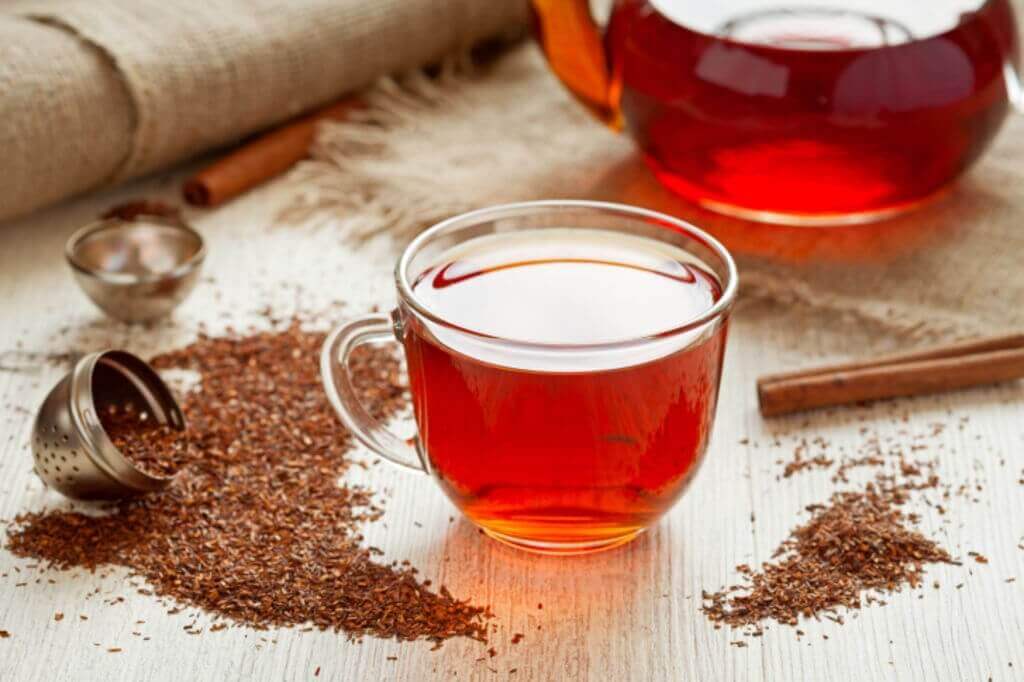
이 음료의 잎은 아프리카에서 자란 붉은 나무로부터 온다. 그리고 그 잎은 과도한 지방을 제거하는 데 도움이 되는 강력한 산화 방지제를 가지고 있다.
홍차의 플라보노이드 중 하나인 아스팔라틴은 스트레스 호르몬의 부정적인 영향을 줄어 불안과 배고픔을 늦춰준다.
재료
- 루이보스 차 1작은술(15g)
- 물 1컵(250ml)
준비 과정
- 루이보스 차 1작은술을 물 한 컵에 넣고 끓인다.
- 준비가 되면 덮어 두고 10분 동안 우려낸 다음 걸러낸다.
섭취 방법
- 매일 오전 중에 마신다.
더 읽어보기: 홍차와 체중 감량의 관계
4. 월계수 잎과 계피차
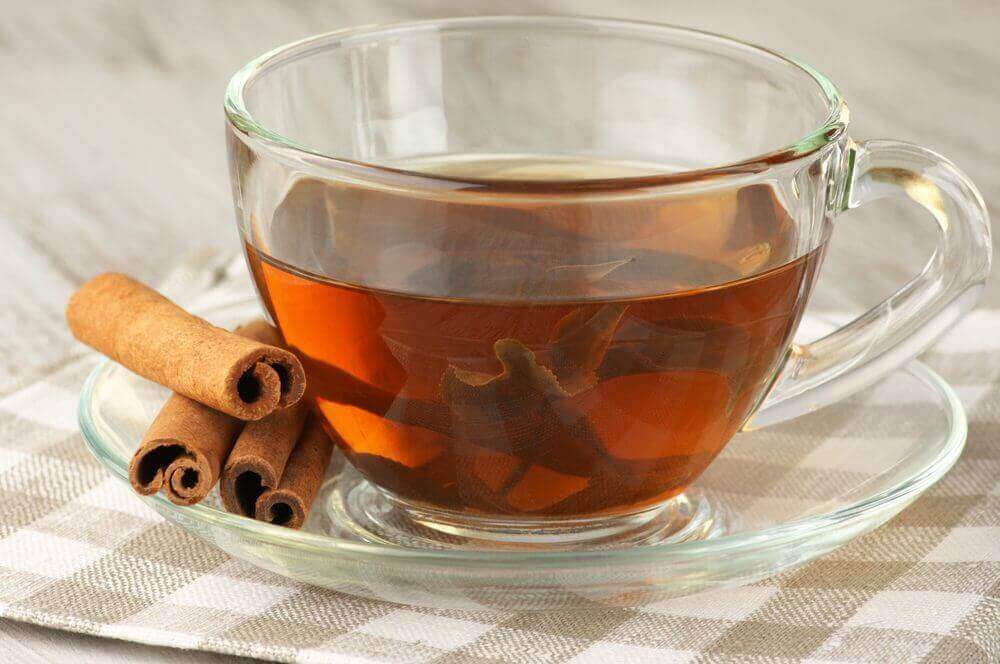
월계수 잎에는 체중 감량에 있어 계피의 효과를 향상하는 항산화 물질이 함유되어 있다. 또한, 이 혼합물은 무엇보다도 혈당을 조절하는 해독 음료다.
재료
- 월계수 잎 1작은술(5g)
- 계피 1/2작은술(2g)
- 물 1컵(250ml)
준비 과정
- 물 한 컵에 월계수 잎과 계피를 넣는다.
- 이 음료를 끓이고 10분 동안 우러나도록 둔다.
- 10분 후에 체로 거른다.
섭취 방법
- 이 차를 공복에 적어도 일주일에 3번 마신다.
- 해독 계획을 세운 경우 3주 동안 연속해서 이 차를 마신다.
5. 아티초크와 레몬차
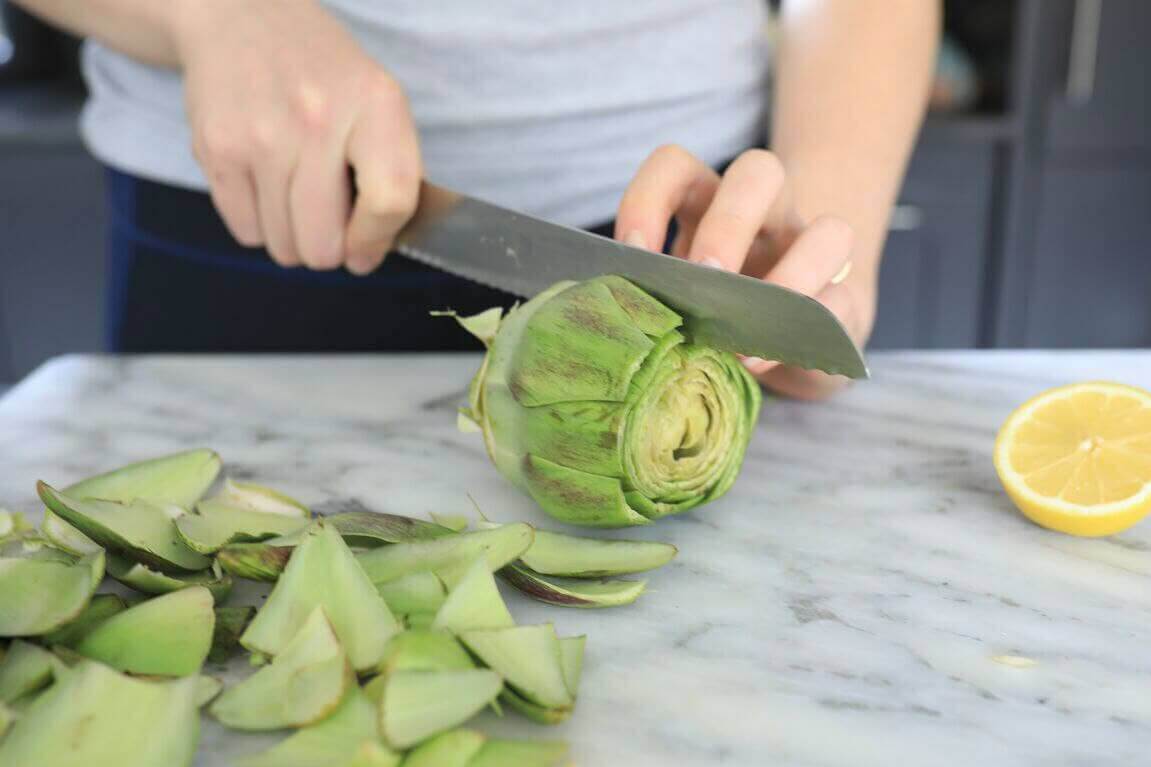
이 천연 아티초크와 레몬차는 체중 감량을 돕는 효과로 유명하다. 수분 저류 현상과 싸우고 신진대사 속도를 향상해 지방을 더 쉽게 연소할 수 있도록 해 준다.
재료
- 아티초크 1개
- 물 2컵(500ml)
- 레몬 1개의 즙
준비 과정
- 아티초크를 여러 조각으로 자르고 물이 담긴 냄비에 넣는다.
- 끓인 다음 레몬즙을 넣는다.
- 15분간 우러나게 두었다가 체로 걸러 낸다.
섭취 방법
- 오전에는 빈속에 1컵을 마시고 오후 중에 다시 한 번 마신다.
- 매일 마시거나 아니면 적어도 일주일에 3회 이상 마신다.
과체중과 싸우고 있는가? 그렇다면 식이 요법을 보완하기 위해 이러한 차를 준비해보자. 몸을 가볍게 하고, 소화를 개선하고, 전반적인 건강을 증진하는 데 도움이 된다.
참고 문헌
모든 인용된 출처는 품질, 신뢰성, 관련성 및 유효성을 보장하기 위해 저희 팀이 철저히 검토했습니다. 이 글의 참고 문헌은 신뢰할 수 있으며 학문적 또는 과학적 정확성을 갖춘 것으로 간주되었습니다.
- Akbari, M., Lankarani, K. B., Tabrizi, R., Ghayour-Mobarhan, M., Peymani, P., Ferns, G., Ghaderi, A., & Asemi, Z. (2019). The Effects of Curcumin on Weight Loss Among Patients With Metabolic Syndrome and Related Disorders: A Systematic Review and Meta-Analysis of Randomized Controlled Trials. Frontiers in Pharmacology, 10, 649. https://www.ncbi.nlm.nih.gov/pmc/articles/PMC6582779/
- Belfarhi, Leila & Bouhenna, Mustapha & Bouafir, Yesmine & Boumehira, Ali & Nebbak, Amira & Ziani, Borhane E.C. & Bachari, K. & Joe Dailin, Daniel & Ho, Ting & El Enshasy, Hesham. (2020). Medicinal proprieties and toxicology of therapeutic herbal tea: A review. Bioscience Research, 17, 793-814. https://www.researchgate.net/publication/342008882_Medicinal_proprieties_and_toxicology_of_therapeutic_herbal_tea_A_review
- Cassels, B. K., Fuentes-Barros, G., & Castro-Saavedra, S. (2019). Boldo, Its Secondary Metabolites and their Derivatives. Current Traditional Medicine, 5(1), 31-65. https://www.eurekaselect.com/article/94484
- Chang, H. C., Peng, C. H., Yeh, D. M., Kao, E. S., & Wang, C. J. (2014). Hibiscus sabdariffa extract inhibits obesity and fat accumulation, and improves liver steatosis in humans. Food & Function, 5(4), 734-739. https://pubmed.ncbi.nlm.nih.gov/24549255/
- Chen, S., Osaki, N., & Shimotoyodome, A. (2015b). Green tea catechins enhance norepinephrine-induced lipolysis via a protein kinase A-dependent pathway in adipocytes. Biochemical And Biophysical Research Communications, 461(1), 1-7. https://www.sciencedirect.com/science/article/abs/pii/S0006291X15006269
- Da Costa Soares, A. P., De Faria, N. C., Graciano, G. F., Da Silva, J. A., Gonçalves, V. S. D. S., Del Carmen Trancoso Valenzuela, V., Correia, M. I. T. D., & Anastácio, L. R. (2022). Ginger infusion increases diet-induced thermogenesis in healthy individuals: A randomized crossover trial. Food Bioscience, 50, 102005. https://www.sciencedirect.com/science/article/abs/pii/S2212429222004655
- De Faria, N. C., Da Costa Soares, A. P., Graciano, G. F., Correia, M. I. T. D., Del Carmen T Valenzuela, V., & Anastácio, L. R. (2022). Acute green tea infusion ingestion effect on energy metabolism, satiety sensation and food intake: A randomized crossover trial. Clinical Nutrition ESPEN, 48, 63-67. https://www.sciencedirect.com/science/article/abs/pii/S2405457722000456
- Fan, S., Raychaudhuri, S., Kraus, O., Shahinozzaman, M., Lofti, L., & Obanda, D. N. (2020). Urtica dioica Whole Vegetable as a Functional Food Targeting Fat Accumulation and Insulin Resistance-a Preliminary Study in a Mouse Pre-Diabetic Model. Nutrients, 12(4), 1059. https://www.ncbi.nlm.nih.gov/pmc/articles/PMC7231388/
- Fernandes, R. C., Araújo, V. A., Giglio, B. M., Marini, A. C. B., Mota, J. F., Teixeira, K. S., Monteiro, P. A., Lira, F. S., & Pimentel, G. D. (2018). Acute Epigallocatechin 3 Gallate (EGCG) Supplementation Delays Gastric Emptying in Healthy Women: A Randomized, Double-Blind, Placebo-Controlled Crossover Study. Nutrients, 10(8), 1122. https://www.mdpi.com/2072-6643/10/8/1122
- He, R. R., Chen, L., Lin, B. H., Matsui, Y., Yao, X. S., & Kurihara, H. (2009). Beneficial effects of oolong tea consumption on diet-induced overweight and obese subjects. Chinese Journal of Integrative Medicine, 15(1), 34–41. https://pubmed.ncbi.nlm.nih.gov/19271168/
- Heydarian, A., Tahvilian, N., Shahinfar, H., Abbas-Hashemi, S. A., Daryabeygi-Khotbehsara, R., & Aryaeian, N. (2023). Effect of cardamom consumption on inflammation and blood pressure in adults: A systematic review and meta-analysis of randomized clinical trials. Food Science & Nutrition, 12(1), 3-12. https://www.ncbi.nlm.nih.gov/pmc/articles/PMC10804083/
- Huang, J., Wang, Y., Xie, Z., Zhou, Y., Zhang, Y., & Wan, X. (2014). The anti-obesity effects of green tea in human intervention and basic molecular studies. European Journal Of Clinical Nutrition, 68(10), 1075-1087. https://www.nature.com/articles/ejcn2014143
- Jiang, J., Emont, M. P., Jun, H., Qiao, X., Liao, J., Kim, D. I., & Wu, J. (2017). Cinnamaldehyde induces fat cell-autonomous thermogenesis and metabolic reprogramming. Metabolism: Clinical and Experimental, 77, 58–64. https://www.ncbi.nlm.nih.gov/pmc/articles/PMC5685898/
- Jurgens, T. M., Whelan, A. M., Killian, L., Doucette, S., Kirk, S., & Foy, E. (2012). Green tea for weight loss and weight maintenance in overweight or obese adults. The Cochrane Database of Systematic Reviews, 12(12), CD008650. https://www.ncbi.nlm.nih.gov/pmc/articles/PMC8406948/
-
Kaçak, K., Yaman, T., Uyar, A., & Kömüroğlu, A. U. (2024). Inhibitory effect of stinging nettle (Urtica dioica L.) extract on body weight gain in rats on a high-fat diet. Przeglad Gastroenterologiczny, 19(1), 23–32 https://www.ncbi.nlm.nih.gov/pmc/articles/PMC10985764/
- Kasprzak-Drozd, K., Oniszczuk, T., Gancarz, M., Kondracka, A., Rusinek, R., & Oniszczuk, A. (2022). Curcumin and Weight Loss: Does It Work? International Journal of Molecular Sciences, 23(2), 639. https://www.ncbi.nlm.nih.gov/pmc/articles/PMC8775659/
- Liu, H., Li, J., Lin, S., Liu, T., & Zheng, C. (2021). Effects of dietary fennel (Foeniculum vulgare Mill.) seed powder supplementation on growth performance, nutrient digestibility, small intestinal morphology, and carcass traits of broilers. PeerJ, 9, e10308. https://www.ncbi.nlm.nih.gov/pmc/articles/PMC7847707/
- Mansour, M. S., Ni, Y. M., Roberts, A. L., Kelleman, M., Roychoudhury, A., & St-Onge, M. P. (2012). Ginger consumption enhances the thermic effect of food and promotes feelings of satiety without affecting metabolic and hormonal parameters in overweight men: a pilot study. Metabolism: Clinical and Experimental, 61(10), 1347–1352. https://pubmed.ncbi.nlm.nih.gov/22538118/
- Ojulari, O. V., Lee, S. G., & Nam, J. O. (2019). Beneficial Effects of Natural Bioactive Compounds from Hibiscus sabdariffa L. on Obesity. Molecules, 24(1), 210. https://www.ncbi.nlm.nih.gov/pmc/articles/PMC6337177/
- Pan, H., Gao, Y., & Tu, Y. (2016). Mechanisms of Body Weight Reduction by Black Tea Polyphenols. Molecules, 21(12), 1659. https://www.ncbi.nlm.nih.gov/pmc/articles/PMC6273558/
- Ponder, A., & Hallmann, E. (2019). Phenolics and Carotenoid Contents in the Leaves of Different Organic and Conventional Raspberry (Rubus idaeus L.) Cultivars and Their In Vitro Activity. Antioxidants, 8(10), 458. https://www.ncbi.nlm.nih.gov/pmc/articles/PMC6827140/
- Qin, B., Panickar, K. S., & Anderson, R. A. (2010). Cinnamon: potential role in the prevention of insulin resistance, metabolic syndrome, and type 2 diabetes. Journal of Diabetes Science and Technology, 4(3), 685-693. https://www.ncbi.nlm.nih.gov/pmc/articles/PMC2901047/
- Rezaee, Z., & Rashidlamir, A., & Krüger, K., & Oral, O. (2022). White Tea a Potential Herbal Drink for Weight Loss? A Narrative Review. Scientific Chronicles, 27(3), 419-430. https://www.researchgate.net/publication/367157366_Is_White_Tea_a_Potential_Herbal_Drink_for_Weight_Loss_A_Narrative_Review
- Salem, M. B., Affes, H., Ksouda, K., Dhouibi, R., Sahnoun, Z., Hammami, S., & Zeghal, K. M. (2015). Pharmacological Studies of Artichoke Leaf Extract and Their Health Benefits. Plant Foods For Human Nutrition, 70(4), 441-453. https://link.springer.com/article/10.1007/s11130-015-0503-8
- Sanderson, M., Mazibuko, S. E., Joubert, E., de Beer, D., Johnson, R., Pheiffer, C., Louw, J., & Muller, C. J. (2014). Effects of fermented rooibos (Aspalathus linearis) on adipocyte differentiation. Phytomedicine: International Journal of Phytotherapy and Phytopharmacology, 21(2), 109–117. https://pubmed.ncbi.nlm.nih.gov/24060217/
- Silva, M. L., Bernardo, M. A., Singh, J., & de Mesquita, M. F. (2022). Cinnamon as a Complementary Therapeutic Approach for Dysglycemia and Dyslipidemia Control in Type 2 Diabetes Mellitus and Its Molecular Mechanism of Action: A Review. Nutrients, 14(13), 2773. https://www.ncbi.nlm.nih.gov/pmc/articles/PMC9269353/
- Singletary, K. (2022). Cardamom. Potential Health Benefits. Nutrition Today, 57(1), 38-49. https://journals.lww.com/nutritiontodayonline/fulltext/2022/01000/cardamom__potential_health_benefits.8.aspx
- Sirotkin, A. V., & Kolesárová, A. (2021). The anti-obesity and health-promoting effects of tea and coffee. Physiological Research, 70(2), 161–168. https://www.ncbi.nlm.nih.gov/pmc/articles/PMC8820582/
- Vinokur, Y., Rodov, V., Reznick, N., Goldman, G., Horev, B., Umiel, N., & Friedman, H. (2006). Rose Petal Tea as an Antioxidant-rich Beverage: Cultivar Effects. Llull: Revista de la Sociedad Española de Historia de las Ciencias y de las Técnicas, 9(16), 35-54. https://dialnet.unirioja.es/servlet/articulo?codigo=62037
- Yılmaz, B., & Acar‐Tek, N. (2023). White tea: Its history, composition, and potential effects on body weight management. eFood, 4(3), 1-11. https://onlinelibrary.wiley.com/doi/full/10.1002/efd2.89
- Zheng, J., Zheng, S., Feng, Q., Zhang, Q., & Xiao, X. (2017). Dietary capsaicin and its anti-obesity potency: from mechanism to clinical implications. Bioscience Reports, 37(3), 1-10. https://www.ncbi.nlm.nih.gov/pmc/articles/PMC5426284/
